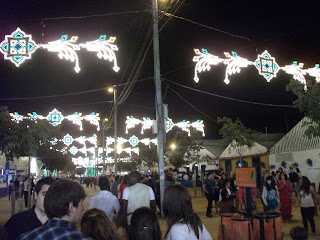Unlike in Malaga and Granada, in Cordoba we
weren’t going to stay with local friends – we organised couch surfing (which
was my first experience with this website ever). So I found a nice-sounding
Greek who offered the three of us a place to sleep for one night. When we
arrived in Cordoba in the early afternoon it turned out he is not in the town
at the moment and he texted me he would send a Greek housemate to pick us up.
We felt a bit discouraged and drowned our disappointment in Haribos gummy
bears. We decided to leave our stuff in the lockers at the bus station and book
the earliest bus to our last destination, Seville. It was at 5am so we figured
we can just go to some bar later and drink the time away. Eventually, when we
gave up on the entire couch surfing thing, an Italian friend (where’s the
Greek?!) of the Greek arrived and hosted us in his shared flat. After initial
awkwardness we went to see Cordoba with our host and his friends and by the end
of the afternoon we were basically best friends.
After dinner (delicious pasta made
by Italians) we were taken to Feria de
Cordoba, a huge crazy festival on the other side of the city. It was great
fun; there were thousands of people there. We drank sangria, danced and really
regretted we had booked this 5am bus… So all in all my first couch surfing
experience – although we did not actually sleep at all in the end – was very
positive. And Cordoba? I will probably remember it as the crazy day rather than
anything else!

















































